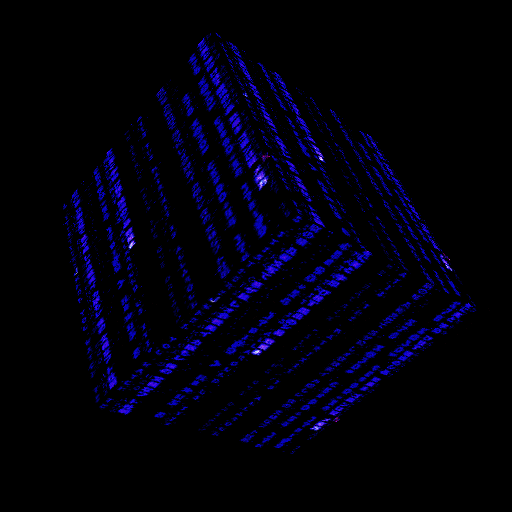🕵️♂️Get Up to 80% Off On All Products, StaySharp⚡
Revolutionizing Data Security: Quantum Key Distribution (QKD)
Cutting-edge technology designed to enhance secure communication in the quantum age. This article discusses how QKD works, its advantages over traditional key distribution methods, and the practical challenges it faces today. Dive into the mechanics of quantum cryptography and understand its potential to revolutionize data security.
CYBERSECURITY
Phillemon Neluvhalani
4/27/20243 min read


Traditional methods of key distribution have proven to be vulnerable. However, there is a cutting-edge technology that holds the promise of revolutionizing data security in the quantum age - Quantum Key Distribution (QKD). In this article, we will delve into the mechanics of QKD, explore its advantages over traditional key distribution methods, and discuss the practical challenges it faces today.
How Does QKD Work?
QKD is based on the principles of quantum mechanics, utilizing the properties of quantum particles to establish secure communication channels. Unlike traditional methods that rely on mathematical algorithms, QKD harnesses the laws of physics to ensure the confidentiality of exchanged keys. The fundamental concept behind QKD is the use of quantum properties, such as the uncertainty principle and the no-cloning theorem, to detect any eavesdropping attempts. It involves the transmission of quantum particles, typically photons, between a sender and a receiver. The sender, known as Alice, prepares a random sequence of photons, each with a specific polarization. She then sends these photons to the receiver, known as Bob, through a quantum channel. Bob, on the other end, measures the polarization of each received photon using a randomly selected basis. The crucial aspect of QKD lies in the fact that the act of measuring the photons disturbs their quantum state. Any eavesdropper, known as Eve, trying to intercept the photons would inevitably introduce errors due to the disturbance caused by her measurements. Alice and Bob can detect the presence of Eve by comparing a subset of their exchanged photons and identifying any inconsistencies. If no eavesdropping is detected, Alice and Bob can use the remaining photons to generate a shared secret key. This key can then be used to encrypt and decrypt their communication, ensuring its confidentiality.
Advantages of QKD
QKD offers several advantages over traditional key distribution methods, making it a promising technology in the field of data security. Here are some key advantages: 1. Unconditional Security: Unlike classical encryption methods, which rely on the computational complexity of algorithms, QKD provides unconditional security. It is based on the laws of physics, making it resistant to attacks by even the most advanced quantum computers. 2. Quantum Immunity: QKD is immune to attacks that exploit vulnerabilities in classical encryption algorithms. It offers protection against quantum attacks, such as Shor's algorithm, which can break commonly used encryption schemes. 3. Key Distribution Over Long Distances: QKD enables secure key distribution over long distances, which is crucial in today's interconnected world. It allows for the establishment of secure communication channels between geographically separated entities without the need for physical key exchange. 4. Security Against Eavesdropping: QKD provides a way to detect any eavesdropping attempts. The disturbance caused by eavesdropping introduces errors that can be detected by the legitimate parties, ensuring the confidentiality of the exchanged keys.
Challenges and Future Outlook
While QKD holds great promise for enhancing data security, it also faces practical challenges that need to be addressed for widespread adoption. Some of the key challenges include: 1. Cost and Complexity: The implementation of QKD systems can be costly and complex. The hardware required for generating, transmitting, and detecting quantum particles adds to the overall expense. Additionally, the integration of QKD with existing communication infrastructure can be challenging. 2. Key Rate and Distance: QKD systems currently face limitations in terms of key generation rate and transmission distance. Improving these aspects is crucial for practical deployment in real-world scenarios. 3. Environmental Factors: QKD systems are sensitive to environmental factors, such as temperature and noise. Ensuring stable and reliable operation in varying conditions is a significant challenge. Despite these challenges, ongoing research and development efforts are focused on addressing these limitations and advancing the practical implementation of QKD. The future outlook for QKD is promising, with the potential to revolutionize data security in various sectors, including finance, healthcare, and government communications.
Quantum Key Distribution (QKD) is a cutting-edge technology that leverages the principles of quantum mechanics to enhance secure communication in the quantum age. By utilizing the properties of quantum particles, QKD offers advantages over traditional key distribution methods, including unconditional security, quantum immunity, and the ability to distribute keys over long distances. While facing practical challenges, such as cost, complexity, and key rate limitations, QKD holds great promise for revolutionizing data security. As research and development continue to advance the practical implementation of QKD, its potential to enhance data security in various sectors becomes increasingly evident. In the era of ever-evolving cyber threats, QKD offers a glimpse into the future of data security, where the laws of quantum mechanics provide the foundation for secure communication.


